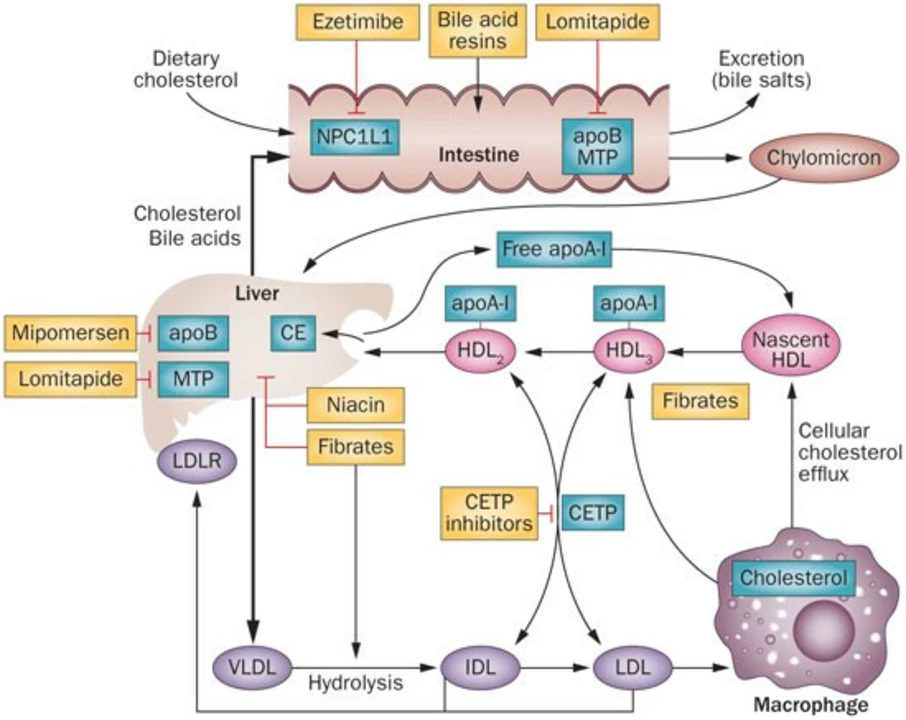Cholesterol management: what really helps lower LDL
High cholesterol is one of the clearest things you can change to cut heart risk. You don’t need complicated plans—small, focused steps move numbers and protect your arteries. Below I give simple, proven actions you can use today and explain when medicines or tests matter.
Quick, practical steps you can start now
Food matters more than supplements. Swap butter and fatty red meat for olive oil, fatty fish, nuts, and lean proteins. Add one serving of oats or barley daily—soluble fiber (about 3 g/day) lowers LDL. Aim for two to three servings of fatty fish per week for omega-3 benefits.
Plant sterols (about 2 g/day) can cut LDL by roughly 8–12%. You’ll find them added to some margarines and products; talk with your pharmacist or doctor if you plan to use them regularly.
Move more: 150 minutes a week of moderate activity (brisk walking, cycling) or 75 minutes vigorous exercise helps. Add two sessions of strength work each week—building muscle improves how your body handles fats and sugar.
Lose even 5–10% of body weight if you’re overweight. That often lowers LDL and triglycerides and raises HDL. Stop smoking and limit alcohol—both hurt cholesterol balance and heart health.
Medications, tests, and when to see your doctor
If lifestyle changes don’t get your LDL low enough, medicines help. Statins are the first choice and cut heart attacks by lowering LDL. If you can’t take statins or they’re not enough, doctors may add ezetimibe, PCSK9 inhibitors, or newer drugs like bempedoic acid. There are also nutraceuticals (red yeast rice, berberine) that affect cholesterol, but check with your doctor—doses and quality vary.
Get a baseline lipid panel before starting treatment. For new statin therapy, recheck in 4–12 weeks to see response, then every 6–12 months when stable. Check a baseline liver test; routine repeat liver tests aren’t necessary unless you have symptoms (deep fatigue, dark urine) or other risks. If you develop unexplained muscle pain, tell your doctor; they may check creatine kinase (CK) and adjust therapy.
Extremely high LDL (over 190 mg/dL) or a family history of early heart disease often means inherited high cholesterol—ask your doctor about specialist care and genetic testing.
Simple monitoring and steady habits beat one-off efforts. Pick two changes to start this week—swap one food, add a 20-minute walk, or schedule a lipid test. Small moves add up to real drops in LDL and big wins for your heart.

